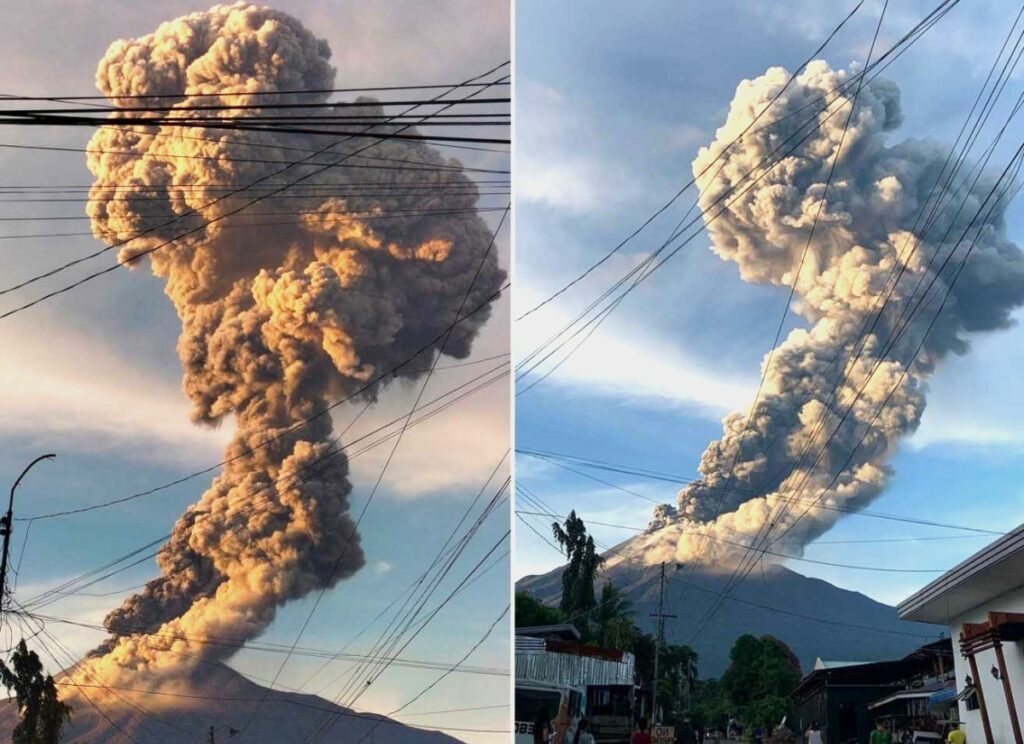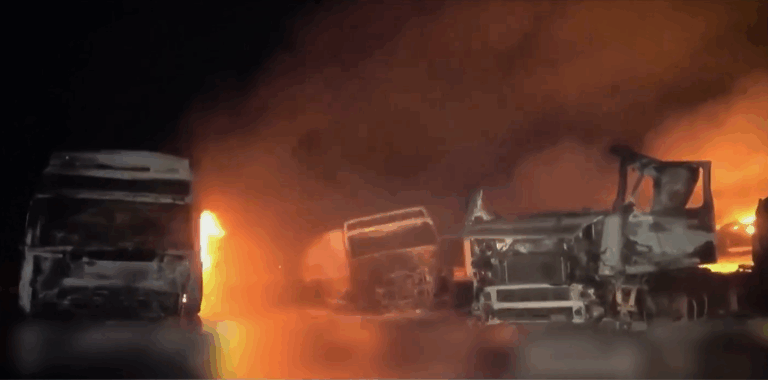
A Fiery Awakening
On April 8, 2025, Mount Kanlaon, a towering giant on Negros Island, Philippines, roared to life with a powerful eruption, spewing a massive 4-kilometer (13,000-foot) ash plume into the atmosphere. The eruption, which lasted over an hour, sent volcanic debris raining down on nearby villages, prompting authorities to raise Alert Level 3, signaling a heightened risk of further eruptions.
Despite the dramatic display, no injuries or major infrastructure damage have been reported. However, residents are being urged to take precautions as the volcano remains restless.
The Fallout: Ashfall, Disruptions, and Community Concerns
As Mount Kanlaon unleashed its fury, at least four villages bore the brunt of the ashfall. Homes, roads, and farmland were coated in thick layers of volcanic dust, disrupting daily life and raising health concerns.
Immediate Consequences of the Eruption:
- Widespread Ashfall – Farmers reported damage to crops, while residents scrambled to protect their homes from the fine volcanic debris.
- School Closures – Local authorities suspended classes in affected areas to safeguard students from potential respiratory issues.
- Health and Safety Measures – Residents were advised to wear face masks and protective eyewear to prevent inhalation of ash particles.
With the possibility of continued volcanic activity, communities are bracing for further disruptions.
Understanding the Danger: Why Kanlaon’s Eruption is a Big Deal
Standing at 2,435 meters (7,989 feet), Mount Kanlaon is one of the most active volcanoes in the Philippines. Nestled within the Pacific Ring of Fire, it has a long history of eruptions, some of which have led to significant evacuations and disruptions.
This latest activity comes on the heels of a December 2024 eruption, which forced thousands to flee their homes. Now, with seismic activity increasing, experts are concerned that this could mark the beginning of a prolonged period of unrest.
What PHIVOLCS is Advising:
- Steer Clear of the 6-Kilometer Permanent Danger Zone (PDZ) – The risk of sudden explosions, rockfalls, and pyroclastic flows remains high.
- Stay Prepared for Evacuation Orders – Authorities are closely monitoring the situation and may escalate the alert level if conditions worsen.
- Take Precautions Against Ash Exposure – Prolonged inhalation of fine ash particles can cause respiratory issues, particularly for young children and the elderly.
Could This Be the Start of Something Bigger?
While this eruption was moderate compared to past events, the potential for stronger explosions, lava flows, or hazardous ashfall remains. Scientists warn that increased seismic activity and gas emissions could indicate a larger eruption is on the horizon.
Possible risks include:
- Lava flows reaching populated areas – While rare for Kanlaon, past eruptions have shown the potential for magma to flow down its slopes.
- Lahars (Volcanic Mudflows) – Heavy rainfall could mix with volcanic ash, creating fast-moving mudflows capable of wiping out homes and infrastructure.
- Flight Disruptions – If ash clouds continue to rise, nearby airports may face cancellations and delays.
Authorities are maintaining a watchful eye on Kanlaon, assessing whether this eruption is an isolated event or the precursor to something more dangerous.
Volcanic Unrest in the Philippines: A History of Eruption Events
The Philippines is no stranger to volcanic upheaval, with 24 active volcanoes scattered across its islands. Some of the most infamous eruptions include:
- Mount Pinatubo (1991) – One of the most powerful eruptions in history, which led to global climate changes and displaced thousands.
- Taal Volcano (2020) – A sudden eruption near Metro Manila that led to mass evacuations and widespread ashfall.
- Mayon Volcano (2018) – A series of eruptions that forced tens of thousands of residents to flee their homes.
With Kanlaon now showing renewed activity, the government is reinforcing disaster preparedness protocols to minimize risks.
What’s Next? Authorities on High Alert
As scientists continue to analyze Mount Kanlaon’s behavior, residents are being urged to stay informed and ready for possible evacuations. If activity escalates, authorities may raise the alert level to 4, indicating an imminent hazardous eruption.
For now, the key safety measures include:
- Avoiding areas near the volcano
- Following updates from PHIVOLCS and local authorities
- Keeping emergency supplies ready in case of evacuation
While the full extent of this eruption’s impact remains uncertain, one thing is clear—Mount Kanlaon has made its presence known, and its next move could shape the lives of thousands in the days to come.



